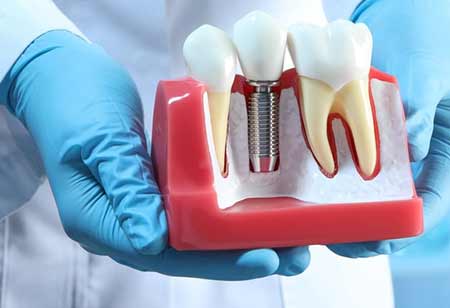Thank you for Subscribing to Healthcare Business Review Weekly Brief
Be first to read the latest tech news, Industry Leader's Insights, and CIO interviews of medium and large enterprises exclusively from Healthcare Business Review
Dental Implants: Technological Advances and Cost Dynamics in 2025
Dental implant cost is evolving with 3d printing precision, augmented reality planning, durable materials, robotic assistance, and teledentistry consultations, making procedures accessible, efficient, and cost-effective for patients.

By
Healthcare Business Review | Friday, January 10, 2025
Stay ahead of the industry with exclusive feature stories on the top companies, expert insights and the latest news delivered straight to your inbox. Subscribe today.
Dental implant cost is evolving with 3d printing precision, augmented reality planning, durable materials, robotic assistance, and teledentistry consultations, making procedures accessible, efficient, and cost-effective for patients.
Dentistry has witnessed remarkable technological progress in recent years, which has significantly impacted the cost of dental implant procedures. This article delves into the innovative technologies that emerged in 2024, exploring their influence on the quality and affordability of dental implants.
3d Printing Transforms Implant Manufacturing:
One notable advancement in dental implant technology is the widespread adoption of 3D printing. This manufacturing technique enables the creation of exact and customized implants tailored to each patient’s unique anatomy. 3D printing enhances implant accuracy and streamlines production processes, reducing manufacturing costs. Consequently, patients may experience a notable decrease in the overall cost of their dental implant procedures.
Augmented Reality For Precise Implant Placement:
Augmented reality (AR) has made its mark in the dental implant process, providing dentists with a tool for precise planning and placement. AR systems allow dentists to visualize the patient’s oral anatomy in real time, facilitating optimal implant positioning. This heightened precision minimizes the risk of complications and the need for additional corrective procedures, ultimately contributing to cost savings for practitioners and patients.
Advanced Materials Enhance Durability And Longevity:
In 2024, dental implant materials will significantly improve by introducing advanced alloys and ceramics. These materials enhance implant durability and contribute to their longevity. As implants become more resistant to wear and corrosion, the necessity for frequent replacements diminishes, resulting in potential long-term cost savings for patients.
Robotic-Assisted Implant Surgery
Integrating robotics into implant surgery has become crucial in the dental implant industry. Robotic-assisted procedures offer incomparable precision, reducing the margin of error in implant placement. This improves the overall success rate of dental implant surgeries and impacts the overall cost by reducing the need for follow-up treatments and revisions.
Teledentistry For Remote Consultations
Teledentistry has gained international recognition, enabling patients to consult with professionals remotely. This facilitates convenient access to expert opinions and empowers patients to explore various treatment options. By promoting remote consultations, teledentistry contributes to a more affordable, transparent, and competitive market. Patients can easily connect with dentists online and discuss treatment plans and associated costs, enhancing accessibility.
Conclusion
In the coming years, the implant technology industry is increasing, reshaping the cost dynamics of implant procedures. From 3D printing and augmented reality to advanced materials and robotic-assisted surgery, integrating these technologies enhances the quality of dental implant treatments. It makes them more accessible and cost-effective for patients. Anticipating further developments in these innovations, one can expect ongoing improvements in the efficiency and affordability of dental implant procedures in the years to come.






